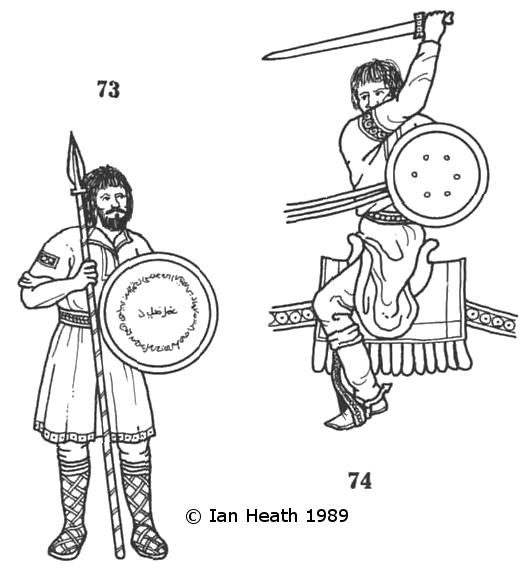
Amazon Audible Gift Memberships
LATE UMAYYAD WARRIORS
An extract from Armies of Feudal Europe 1066-1300by Ian Heath



73 & 74. LATE UMAYYAD WARRIORS
These figures are taken from an ivory casket of Abd al-Malik ibn al-Mansur, dating to 1005, and are typical of the clean-cut soldiers of civilised Andalusia prior to the arrival of the first wave of new Berber invasions which began in the late-11th century. Some probably still even wore uniforms. Their shields were generally circular, infantry carrying either the leather daraqa (also called migann or hagaf) or the wood and leather turs. The turs often had a reinforced rim as well as metal plates and a spiked boss, and was allegedly proof against lances and arrows. However, pictorial evidence does not support this claim, the smaller shield of 74 (a type apparently called a broquel) being depicted in the original pierced through by another horseman's lance. Such cavalry shields are sometimes depicted slung from the saddle-bow when not in use.
Figure 74's stirrups appear to be no more than loops of leather, though other sources of similar date quite clearly depict standard iron stirrups. At east one mounted figure on the casket rides with no stirrups at all, which tallies with a statement by Ibn Hawqal in the 10th century that Andalusians often rode with their feet dangling free of their stirrups or rode without stirrups altogether. On the other hand many Andalusians of this date wore spurs.
[Based on the Leyre (Pamplona) Casket of ‘Abd al-Malik al-Muzaffar, Umayyad Spain, 1004-1005AD]
73 on A hunter defending himself with a shield against two lions, 74 on Two horsemen fighting on the Leyre (Pamplona) Casket of ‘Abd al-Malik al-Muzaffar